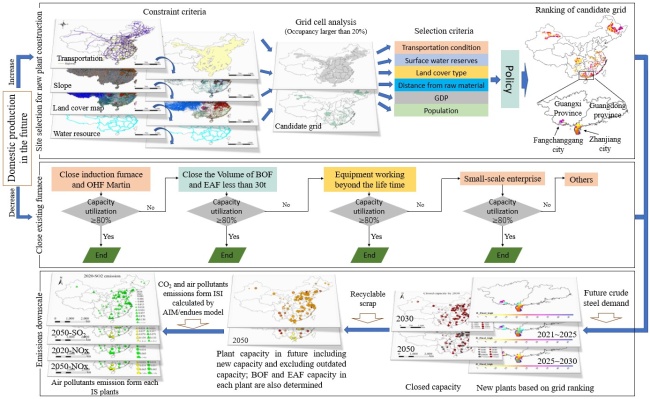論文情報
著者: Zhaoling Li, Tatsuya Hanaoka
年:2020
掲載誌:Resources, Conservation and Recycling, Volume 161, October 2020, 104853
論文へのリンク(英文のみ)
キーワード
Iron and steel industry in Chin; Site selection; Future crude steel demand; Emission downscale; industrial distribution
要旨
This paper provides one systematic algorithm for constructing an emission downscale model focusing on the iron and steel industry (ISI) and providing plans to upgrade China's ISI up to 2050. Three aspects are considered: (1) introducing a site selection algorithm for ISI and setting priorities for closing outdated facilities; (2) mapping the future distribution of ISI by identifying the numbers and locations of new plants based on future crude steel demand, and determining the capacities of Electric Arc Furnace (EAF) and Basic Oxygen Furnace (BOF) in individual plants; and (3) allocating CO2 and air pollutant emissions from the whole ISI sector to individual plants. Results show that, to satisfy the rise in steel demand up to 2030, a total of 22 new plants will be constructed. By 2050, however, 333 Mt of crude steel capacity will be closed as industrial upgrade plans proceed and steel demand declines. Twenty-six percent of the capacity closure will take place in the Beijing-Tianjin-Hebei area. The EAF ratio will increase to 41% in 2050 as recyclable ferrous scrap increases. The capacity utilization rate for each period will exceed 80%, in accordance with national policy requirements. Finally, emission maps from each steel plant are drawn based on plant capacities. In conclusion, this research can provide detailed suggestions for Chinese ISI development with high feasibility. The health and economic impacts of ISI on surrounding areas can subsequently be determined in order to draw attention to the promotion of rational industrial planning.





